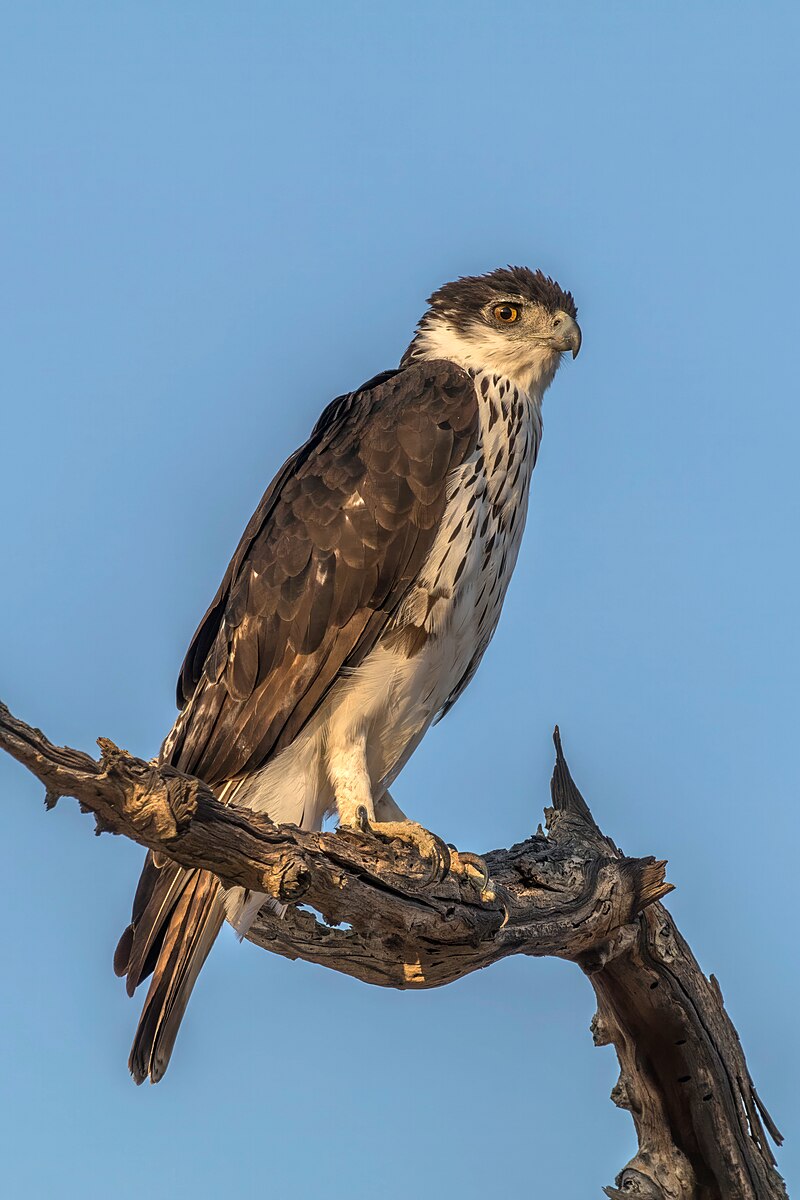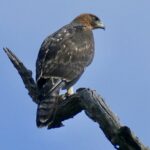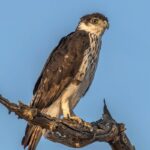The African hawk-eagle (Aquila spilogaster) is a large bird of prey that belongs to the family Accipitridae. Its conservation status is currently listed as “Least Concern” by the International Union for Conservation of Nature (IUCN). However, recent studies have shown that large raptors, including the African hawk-eagle, are experiencing population declines in Africa outside of protected areas.
The Declining Population of the African Hawk Eagle
Populations of 10 species with a body mass of more than 1.3kg have plummeted by 80 per cent over a period of 30 years, with those of another 11 species halving during the same time period. The African hawk-eagle, along with bateleurs, martial eagles, and secretarybirds, all suffered 80 per cent declines.
The research was carried out by counting raptors along road transects in Mali, Burkino Faso, Niger, Cameroon, Kenya, Botswana, and South Africa. The declines are shocking but not surprising given the pace of development and on-going droughts impacting prey availability.
Threats to the African Hawk Eagle
 Image source: African hawk-eagle by Charles J. Sharp
Image source: African hawk-eagle by Charles J. Sharp
Roads and transmission lines both have a massive negative effect on raptor populations. Roadkill attracts carrion eaters such as vultures and eagles, which can then become victims themselves, while birds get electrocuted on the lines or collide with pylons.
In contrast to its declining population outside of protected areas, the African hawk-eagle is relatively common and widely distributed throughout sub-Saharan Africa, including Zimbabwe, Ethiopia, Kenya, Botswana, South Africa, Angola, and more. They prefer wooded countryside and sparse desert-like areas, and some have been known to nest on cliff faces.
Nesting Habits of the African Hawk Eagle
The African hawk-eagle builds its nests on tall structures like the canopies of trees, cliff faces, or pylons. These nests are made of twigs, branches, and green leaves, and size up to around 3 feet in diameter. The birds will predominantly nest during the 43-day incubation period, where the male and female will share the role.
Lifespan of the African Hawk Eagle
The lifespan of an African Hawk-Eagle is largely unknown due to lack of research. However, we can assume that the average lifespan of these birds is between 55-60 years based on their nesting habits and conservation status.
Predators of the African Hawk Eagle
The only real predator of the African Hawk-Eagle is deforestation and habitat destruction, which threatens their nests in the trees.
In conclusion, the African hawk-eagle, designated as Least Concern by the IUCN Red List, should be reclassified as Critically Endangered. The population of this majestic bird of prey has declined significantly outside of protected areas, and urgent conservation efforts are needed to ensure its survival.
References:
– African Hawk Eagle – Animalia
– African Hawk Eagle – Animalia
– Bird of Prey Numbers in Freefall Across Africa
– African Hawk Eagle: The Ultimate Guide


